Mastering the Pickleball Volley: Dominating the Net and Controlling the Point
If you’ve ever picked up a paddle and stepped onto a pickleball court, you know that the game is a delightful mix of tennis, badminton, and table tennis. Yet, while serving and groundstrokes often get most of the attention, there’s a vital component that separates the average player from the advanced: the volley. As players rush the net with lightning speed, successfully executing a volley can either clinch the game or send you back to the baseline in defeat. In this article, we’ll delve deep into everything you need to know about the pickleball volley its definition, significance, techniques, and more. Whether you’re a novice eager to improve or an experienced player seeking to refine your skills, understanding the intricacies of the volley can enhance your game and bring you one step closer to mastering the court.
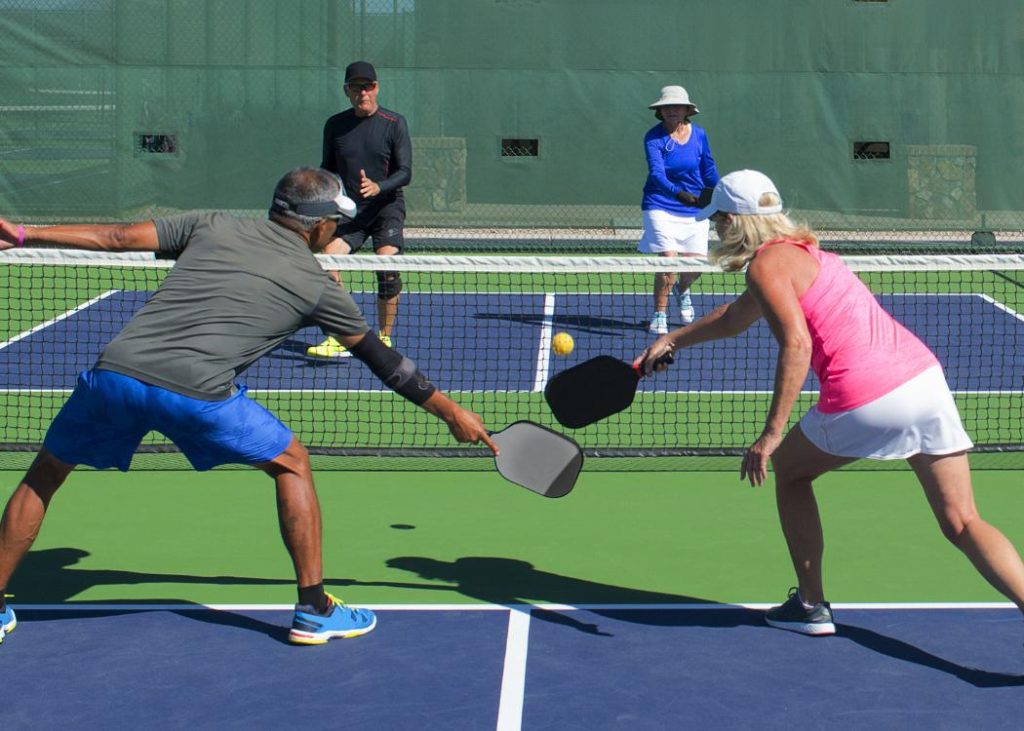
Understanding Pickleball Volley
Volleying in pickleball is a fascinating and crucial aspect of the game. Defined as the act of hitting the ball before it has a chance to bounce on the court, the volley plays a pivotal role in controlling the pace and direction of the game. Imagine standing at the net, paddle poised, waiting for your opponent’s return. The instant the ball is in your reach, executing a precise volley can force your opponent into a difficult position, giving you the upper hand in the rally. This tactic isn’t just about footwork or physical strength; it intertwines strategic thinking and quick reflexes.

Definition of a Volley
So, what exactly is a volley in pickleball? In this context, a volley is when a player strikes the ball before it bounces on their side of the court. It’s a pivotal technique that can dramatically alter the dynamics of a match. As one presses closer to the net, the ability to volley effectively becomes essential. Players rely on quick reactions and a keen sense of timing to execute volleys. Imagine a bird swooping down to catch a worm in midair; that same precision is required in volleying. Just as the bird anticipates its prey, a skilled pickleball player anticipates the ball’s trajectory, ensuring they are in the right place at the right time to make their shot.
Importance of Volley in Pickleball
The significance of a volley extends beyond mere points on the scoreboard. In fact, how effectively you volley could determine the overall outcome of a match. Mastering this technique allows you to take control of the game, exerting pressure on your opponent while minimizing their opportunities to strike back. It’s like a chess game every volley can either trap your opponent or leave you vulnerable. Practicing volleys can improve your presence at the net, making your adversary think twice before engaging in short rallies. If you can consistently execute a volley, you can command the game’s pace, creating opportunities that let you dictate not just the moment, but the momentum of the match. Those who master the volley often find themselves winning more points and, ultimately, prestigious tournaments.
Types of Volleys
Understanding the various types of volleys is essential for any aspiring pickleball player. Each volley serves a different purpose depending on your position on the court and your strategy. Here are some common types:
- Punch/Reactive Volley: This compact shot requires a brief backswing and controlled follow-through. It is ideal for quick exchanges at the net, particularly when the ball is coming in at an accelerated speed.
- Roll/Topspin Volley: By imparting topspin to the ball, players keep their opponents at the baseline and create a more challenging return. This volley can provide an element of surprise and control during rallies.
- Dink/Push Volley: Emphasizing finesse over power, the dink volley aims to land softly in the non-volley zone (also known as the kitchen). It’s particularly effective for forcing errors from opponents who may be positioned deep.
- Drop/Block Volley: This defensive volley applies backspin, resulting in slower ball travel. It’s a strategic choice when you’re pulling back and looking to reset the rally.
There is not only a level of artistry in these types of volleys, but a level of mental agility akin to a concert pianist. The key is to know your strengths and weaknesses, your opponent’s style, and to be able to adjust accordingly.
Basic Rules for Volleying
To successfully integrate volleys into your game, it’s crucial to understand the basic rules governing them:
- The ball must be hit before it bounces.
- Both forehand and backhand volleys are permissible, although backhand volleys are often more common.
- Players are prohibited from entering the non-volley zone (kitchen) while attempting a volley.
- The player must use a blocking motion to hit, meaning no significant backswing is allowed.
- The paddle should be square (vertical) to the net when making contact.
Understanding and adhering to these rules not only ensures fair play but also improves the effectiveness of your volleys. As with any sport, knowing the regulations sets the foundation for improving skills and developing winning strategies.
Techniques for Mastering Volleys
Mastering the volley requires more than just hitting the ball; it demands a combination of grip, positioning, bodily stance, and impeccable timing. Each element builds upon the other, much like a beautifully constructed building where each block supports the entire structure.
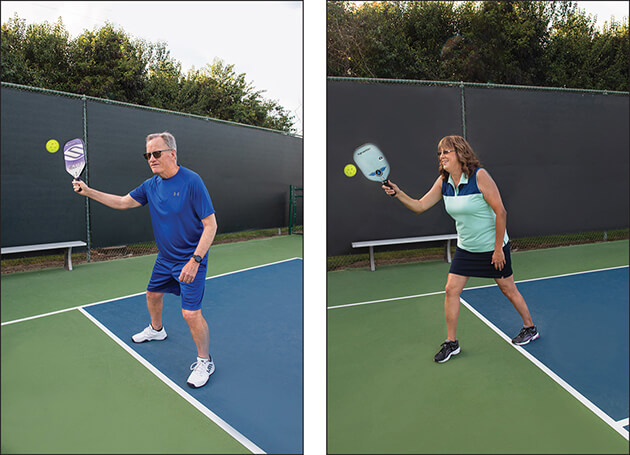
Grip Techniques for Volleys
The right grip is fundamental for achieving successful volleys. Common grips include the Eastern grip, which is often favored by many players, and the Continental grip, which provides versatility for both forehand and backhand shots. When focusing on your grip, the key is to maintain a firm but relaxed hold on the paddle. Imagine a child holding a small bird firm enough not to let it fly away, yet gentle enough not to cause harm. Similarly, a player must provide just the right amount of tension in their grip to maintain control without sacrificing relaxed movement.
Paddle Positioning
Paddle positioning involves keeping the paddle in front of your body and angled slightly upwards. Keeping the paddle at the correct height is crucial, allowing you to make quick adjustments as needed. As you ready yourself for a volley, think of your paddle as a shield, guarding you against your opponent’s shots, prepared to deflect or strike at a moment’s notice.
Body Positioning and Stance
Body positioning and stance also play a crucial role in executing a perfect volley. Start with a slightly forward-leaning athletic stance, knees bent, and weight balanced on the balls of your feet. Your shoulders should be in front of your feet, establishing a solid base for your shots. The elbows should be away from your body but not flailing, operating in unison with your paddle for optimal control. Think of yourself as a coiled spring, ready to uncoil with explosive speed toward the ball.
Timing Your Volley
Timing is essential in volleying. You want to strike the ball at its highest point without allowing it to drop too low. As the ball approaches, practice a short, controlled swing with a firm wrist and follow through. By relying on your body’s instinct, you can practice developing this critical skill, turning every volley into a controlled weapon rather than a reactive back-and-forth exchange. Anticipating the ball’s trajectory and your opponent’s position makes the timing of your volley just as strategic as a well-planned chess move.
Types of Volley Shots
Now that we’ve covered the foundational techniques for volleying, it’s important to understand the specific types of volley shots that can be utilized during a game. Each has its unique characteristics and advantages, providing players various weapons in their arsenal.
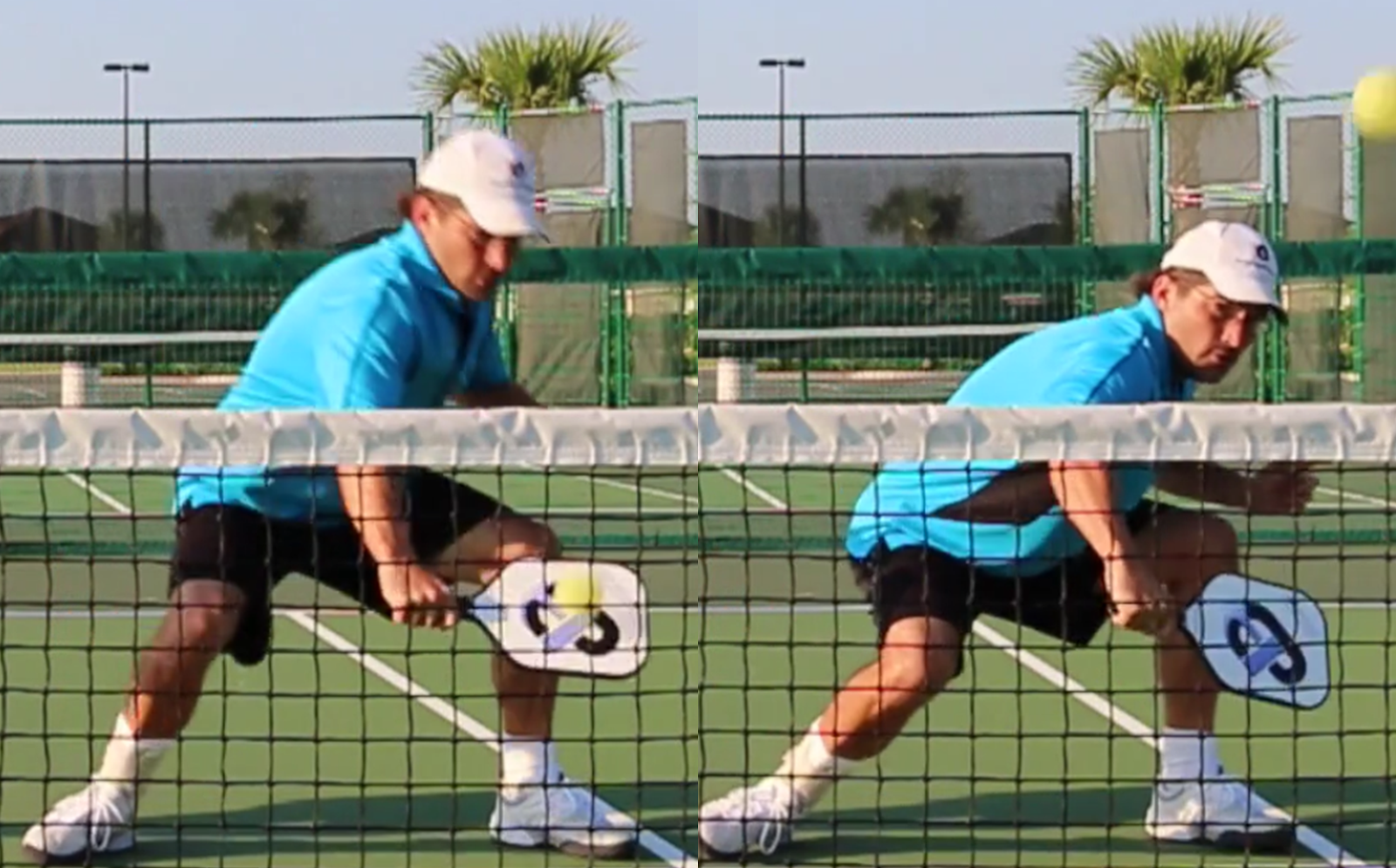
Forehand Volley
A forehand volley is performed by striking the ball with your dominant hand forward. Precision and timing are essential here, as the trajectory of the shot can make a significant impact on how your opponent responds. The forehand volley is often complemented with topspin to add control and depth to your shot.
Backhand Volley
Conversely, the backhand volley utilizes the non-dominant hand to strike the ball. This volley also requires excellent timing and hand-eye coordination while allowing you to keep your opponent guessing. Mastering the backhand volley provides variety to your game, effectively opening up the court.
Punch Volley
The punch volley is characterized by a compact motion with minimal backswing, delivering a quick, controlled return. It thrives in high-pressure situations where swift reactions are critical. When executed properly, you can punch the ball back over the net with aggressive force and placement.
Drop Volley
The drop volley requires finesse; it demands a softer touch to drop the ball just over the net. This shot is particularly effective when your opponent is deeply positioned on the court and opens up space for follow-up plays. Visualize a leaf falling gently to the ground; it’s all about subtlety and control.
Dink Volley
In pickleball, the dink volley is a soft shot that aims to place the ball right over the net, ideally landing in the kitchen area. It showcases your ability to maintain control and force your opponent to come forward, which can create openings for attacking plays. Think of the dink volley as a delicate piece of artwork, intricately designed to provoke a response from your opponent.
Strategies for Effective Volleys
Understanding how to effectively execute volleys is integral to dominating that crucial section of the court. Like a skilled dancer, the key is in the rhythm and timing of your movement.
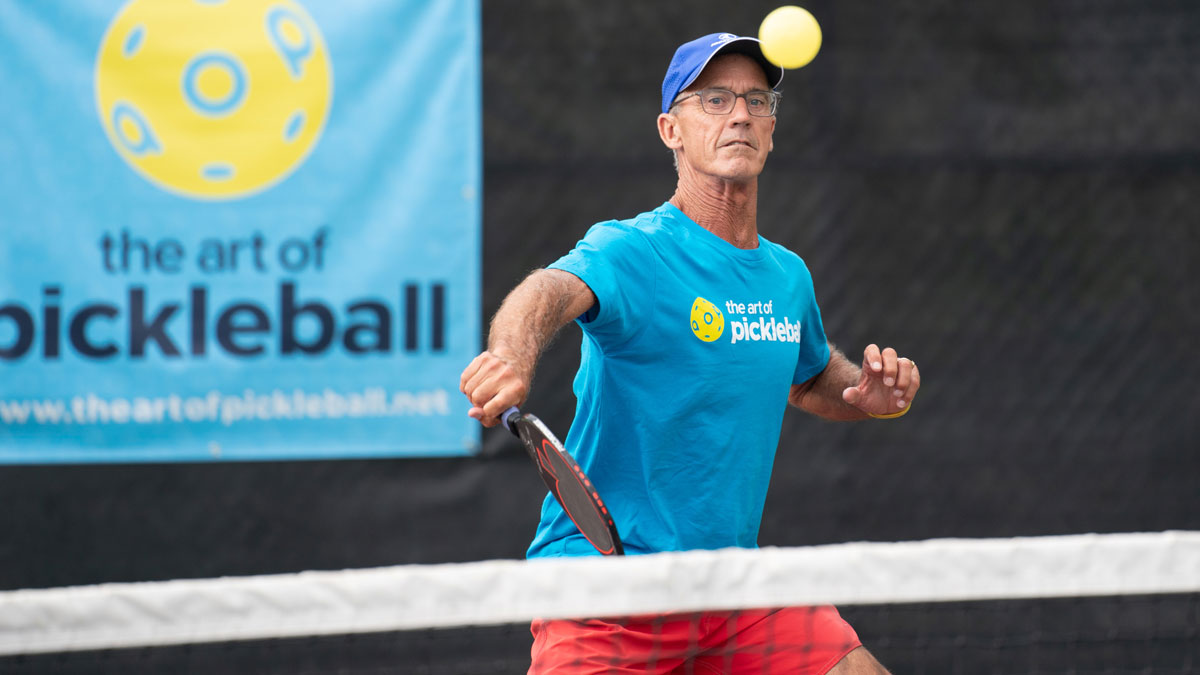
Anticipation and Reading Opponents
Great players not only rely on their physical skills but also on their ability to anticipate their opponents’ moves. Pay attention to body language and footwork, which can provide valuable cues. Staying mentally engaged ensures that you are always one step ahead, ready to react much like a seasoned detective piecing together clues to solve a mystery.
Targeting Your Opponent’s Feet
When volleying, aim for your opponent’s feet. Aiming low can create difficult angles and force your opponent into a hurried return. Harnessing this strategy means being precise and purposeful in your shot selection and can turn the tide of a rally in your favor.
Utilizing Court Positioning
Maintaining proper court positioning amplifies your volleying prowess. Stay close to the net and keep your paddle at the ready, ensuring you’re in a prime position to intercept incoming balls. Think of yourself as a soundboard, ready to absorb and direct incoming signals, converting them into a precision shot.
Volleying During Dinking Exchanges
Engaging in dinking exchanges can also open channels for effective volleys. Stand slightly back from the net line and practice soft volleys that keep your opponent at bay. The challenge is in maintaining control amid the quick back-and-forth responses, making it an excellent opportunity to build your volleying skills.
Drills to Improve Volley Skills
Developing strong volley skills takes consistent practice, and various drills can enhance your technique and flexibility on the court.
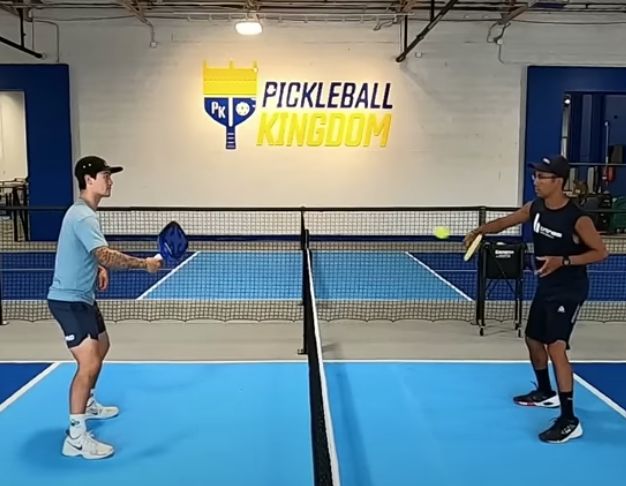
Wall Volley Drill
To execute the wall volley drill, find an appropriate wall and stand 6-8 feet away, holding your paddle in a ready position. Aim to hit volleys against the wall, ensuring the ball does not bounce before you strike. Gradually increase your pace and focus on control, building both confidence and muscle memory in your shots.
Partner Volley Drill
In the partner volley drill, work with a friend or fellow player. Stand opposite each other, and place targets on the court. Take turns volleying the ball toward the targets while maintaining an exchange. This drill not only improves volley accuracy but also encourages strategic shot placement.
Close Volleys Drill
For this drill, take your position near the net with a partner. Engage in a rapid exchange of close-range volleys, focusing on keeping the shots low and well-placed. The goal is to enhance your control and consistency while executing precision volleys.
Quick Feed Volleys Drill
In this drill, have a partner or coach feed balls rapidly to you. Your focus should be on quickly returning the volleys with accuracy. This exercise enhances reaction time, coordination, and the ability to maintain composure under pressure.
Common Mistakes to Avoid
A skilled player can quickly identify areas for improvement, particularly in their volleying technique. Recognizing common pitfalls can help you elevate your game.
Overextending Swing
One common mistake is using long, exaggerated swings during volleys. Instead, keep your swings compact and controlled. Shorter strokes provide better accuracy and minimize the risk of errors.
Poor Positioning
Maintaining an aggressive stance close to the net is crucial. Relying on poor positioning can leave you vulnerable to powerful shots. Stay agile and focused, ready to intercept incoming balls effectively.
Misjudging the Ball’s Trajectory
A common error is misjudging the ball’s trajectory. Proper anticipation allows you to position yourself optimally and execute effective volleys throughout the match. Awareness and understanding of your opponent’s swings are pivotal in making successful plays.
Failing to Use Proper Grip
Using an inconsistent grip can lead to erratic shots. Sticking to a consistent grip ideally the Continental grip improves overall control and versatility in your volleys.
Advanced Volley Concepts
As you gain experience, exploring advanced concepts of volleying can offer new dimensions to your game, enhancing both your technique and tactical approach.
Reaction Time and Agility
Enhancing your reaction time is crucial for volleying. Focus on drills that challenge your reflexes, increasing your agility to intercept quick shots. This skill is akin to a dancer moving gracefully across the floor, reacting to the rhythm of the music.
Incorporating Spin into Volleys
Adding spin to your volleys can add an element of unpredictability for your opponents. Training in topspin, backspin, or sidespin will disrupt their rhythm and increase your chances of gaining a competitive edge.
Transitioning Between Different Volley Types
Advanced players are often adept at swiftly transitioning between different types of volleys. Flexibility in shot selection keeps your opponent guessing, creating a tactical advantage. Practicing rapid shifts in your volleying style can prove advantageous particularly during intense rallies.
Understanding Footwork in Volleying
Proper footwork is the cornerstone of effective volleying. Practicing lateral movement, quick pivots, and maintaining balance ensures you are positioned correctly to strike your shots. Consider your footwork as the foundation of a sturdy building; without it, the structure cannot stand strong.
Volley Positioning and Footwork
Mastering volley positioning and footwork is essential in executing successful volleys.
Importance of Ready Position
The ready position is crucial for effective volley execution. Keep your knees bent, feet shoulder-width apart, and paddle up in front of your body. This stance primes you for quick movements and sharp reactions as opposed to a flat-footed, passive approach.
Lateral Movement Techniques
Utilizing lateral movements is essential for effective volleying. Quick side-to-side steps enable you to cover the court’s breadth and effectively react to incoming shots. Remaining light on your feet and anticipating the ball’s trajectory ensures you can move seamlessly between shots.
Forward Movement Strategies
To move from the baseline to the net, focus on controlled lunges and strides. Proper forward movement builds confidence and aggressiveness while volleying, enhancing your overall court presence.
Split-Step Timing
Incorporating a split-step allows for effective transitions. Timing your split-step just before your opponent strikes the ball can set you up to respond quickly in any direction. This technique cultivates a proactive playing style and keeps you engaged.
Improving Reaction Time
Enhancing your reaction time can be a game-changer.
Drills to Enhance Quick Reflexes
Implement specific drills that challenge your reflexes. For instance, partner drills that involve sudden volleys can sharpen your reaction time, making you more adept at responding to unpredictable shots.
Partner Reaction Drills
Similarly, engage in partner drills that require you to return each other’s volleys rapidly. This exercise builds anticipation, helping you to read your partner’s movements, while improving your overall volleying abilities.
Using Visual Cues for Anticipation
Train your eye to spot visual cues from your opponent. Observing their paddle position, body language, and intent can enhance your ability to predict their shots, allowing you to react more effectively.
The Role of Volleys in Strategy
Understanding the role of volleys within the broader strategic context of the game can enhance your gameplay.
Offense vs. Defense in Volleying
Differentiate between offensive and defensive volleys. Employ aggressive volleys to pressure your opponent, while also using softer shots to regain control during challenging exchanges. Adaptability is the key as you navigate through various phases of a match.
Setting Up Points with Volleys
Strategically placing your volleys can manipulate your opponent’s positioning to set up for future points. Use your understanding of the court to create openings and force errors from your opponents.
Understanding Tempo and Control
Managing the tempo of the game is crucial. Consistent, controlled volleys not only maintain the rhythm but also dictate your opponents’ actions and choices.
Playing Volleys in Tournaments
When joining tournaments, the nuances of volley execution become even more crucial.
Rules Specific to Tournament Play
It’s critical to understand the specific rules of tournament play as they may differ from casual matches. Ensure you are aware of the bounce rule and scoring system to avoid costly mistakes during matches.
Strategies for High-Pressure Situations
In high-pressure tournament situations, prioritize consistent, controlled volleys. Quick decision-making can keep the ball in play, while maintaining a calm disposition as you navigate through stressful moments.
Mental Preparation for Competitive Volleying
To mentally prepare, engage in deep breathing exercises and maintain positive self-talk, which can alleviate pre-match anxiety. Clear communication with your partner is also vital, promoting synergy and teamwork during competitive play.
Resources for Further Improvement
For players looking to elevate their game, employing a variety of resources can be beneficial.
Recommended Books on Pickleball
“Playing Pickleball” by Peter Weverka is a recommended read, as it covers comprehensive techniques suitable for players at any skill level.
Online Video Tutorials
Various online platforms offer valuable video tutorials focused on advanced volley techniques, emphasizing practical drills and strategies.
Local Pickleball Clubs and Coaches
Utilizing resources like Pickleheads, which lists local clubs and instructors, can enhance knowledge through personal lessons and community engagement. This access to experienced coaches accelerates skill development.
Social Media Communities for Pickleball Players
Engaging with online communities dedicated to pickleball can offer insights, strategies, and feedback on techniques. Platforms like Facebook and Reddit host numerous groups where players share experiences and seek advice.
FAQs
What is the volley in pickleball?
The volley in pickleball is defined as hitting the ball before it bounces on your side, allowing players to control the tempo of the game and apply pressure on their opponents.
When should you use the volley?
You should use a volley when the ball is within reach, as it provides an opportunity to take a shot out of the air, significantly affecting the game’s pace.
What is a swinging volley in pickleball?
A swinging volley occurs when you strike the ball out of the air with a full swing, rather than a soft touch, making it an effective offensive shot that demands good timing and control.
What is the no-volley rule in pickleball?
The no-volley rule states that players cannot volley the ball while standing in the non-volley zone, or “kitchen,” to prevent aggressive shots and maintain a controlled gameplay style.
Conclusion
By understanding the intricacies of the pickleball volley from its definition and importance to mastering techniques and avoiding common pitfalls you can empower your game and significantly enhance your skills. Whether you choose to adopt strategic approaches while volleying or engage in targeted drills to improve your reflexes, the journey to volley mastery promises growth, excitement, and triumph on the court. So, don your paddle, practice, and remember: every successful volley can transform the game’s rhythm and lead you to victory! Embrace the challenge, and the court will reward you.
